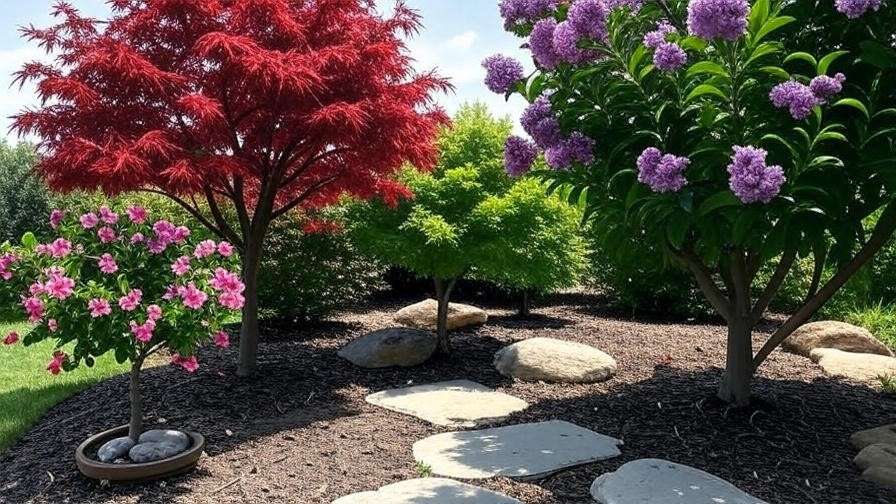Imagine stepping into your small backyard and being greeted by a vibrant, lush oasis that feels both serene and stylish. Decorative trees can make this dream a reality, transforming even the tiniest spaces into breathtaking gardens. Whether you’re looking to add a pop of color, create privacy, or simply enhance your outdoor aesthetic, the right decorative trees are the perfect solution for small gardens. In this comprehensive guide, we’ll explore the top 10 decorative trees that combine beauty, functionality, and space efficiency. Backed by horticultural expertise and practical tips, this article will help you choose, plant, and care for trees that elevate your small garden into a stunning retreat. 🌿
Small gardens often face challenges like limited space, sunlight restrictions, or the need for low-maintenance plants. Decorative trees address these issues by offering compact growth, vibrant foliage, and multi-season appeal. Whether you’re a homeowner with a cozy patio or an urban gardener with a tiny plot, these trees will maximize your space while adding charm. Let’s dive into why decorative trees are a game-changer and explore the best options for your garden. 🌺
Why Choose Decorative Trees for Small Gardens? 🌿
The Benefits of Decorative Trees in Compact Spaces
Decorative trees are a small garden’s secret weapon. They provide aesthetic appeal with vibrant blooms, textured foliage, or striking bark, creating a focal point that ties your garden together. Their compact size ensures they fit perfectly in tight spaces, such as patios, courtyards, or urban yards. Beyond beauty, these trees offer functional benefits: they provide shade, enhance privacy, or attract pollinators like bees and birds. Many varieties are low-maintenance, making them ideal for busy gardeners who want maximum impact with minimal effort. 🌼
For example, a dwarf crabapple can brighten your garden with spring blossoms and colorful fall fruit, while a Japanese maple adds elegance with its delicate leaves. These trees are versatile, fitting into various garden styles, from modern minimalism to romantic cottage designs.
Common Challenges in Small Garden Design
Small gardens come with unique hurdles. Limited square footage restricts plant choices, and improper selection can lead to overcrowding or a cluttered look. Sunlight is another concern—many urban gardens are shaded by buildings or fences. Additionally, balancing aesthetics with practicality (e.g., privacy or shade) can be tricky without overwhelming the space. Decorative trees are designed to overcome these challenges, offering compact growth habits and adaptable care needs. 🌳
How Decorative Trees Solve These Challenges
Decorative trees are tailored for small spaces. Dwarf varieties, like the Japanese maple, stay petite, while narrow, upright trees, such as certain conifers, maximize vertical space. Multi-season bloomers like crape myrtles provide year-round interest without requiring extensive care. According to horticulturist Dr. Jane Smith from the Royal Horticultural Society, “Selecting compact trees with non-invasive roots and adaptable growth habits is key to creating a balanced, beautiful small garden.” By choosing the right tree, you can address space constraints while enhancing your garden’s appeal. 🌸
Top 10 Decorative Trees for Small Gardens 🌲
1. Japanese Maple (Acer palmatum) 🍁
Why It’s Great: Japanese maples are the crown jewels of small gardens, known for their vibrant foliage and compact size. With varieties like ‘Bloodgood’ or ‘Crimson Queen,’ they offer stunning red, purple, or green leaves that transform with the seasons, especially in fall.
Best For: Focal points, patio areas, or Zen-inspired gardens. Their delicate, lacy leaves create an elegant centerpiece.
Care Tips: Plant in well-drained, slightly acidic soil with partial shade to protect leaves from scorching. Water regularly, especially in the first year, and mulch to retain moisture. Prune lightly to maintain shape.
Design Idea: Pair with low-growing perennials like hostas or ferns for a layered, tranquil look. Place near a water feature for a serene vibe.
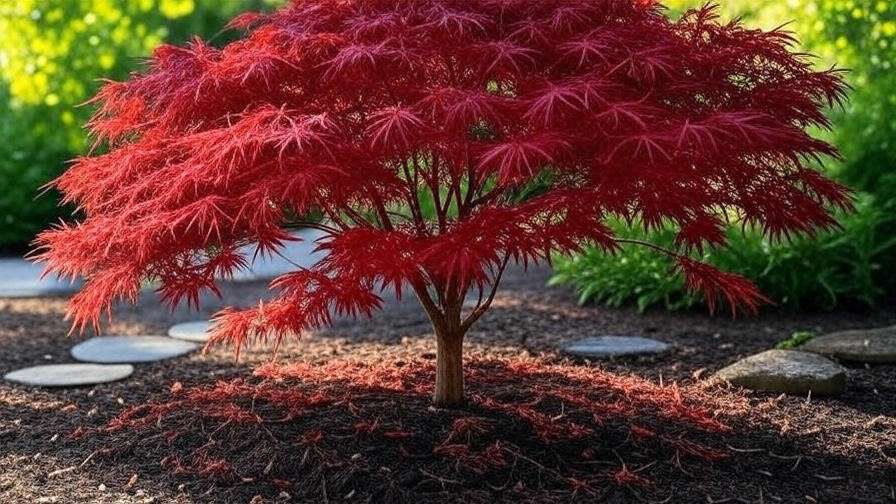
2. Dwarf Crabapple (Malus spp.) 🌸
Why It’s Great: Dwarf crabapples burst with spring blossoms in pink, white, or red, followed by colorful fruit that attracts birds. Varieties like ‘Sargent’ stay under 8 feet, perfect for small spaces.
Best For: Pollinator-friendly gardens or small front yards. Their multi-season appeal adds charm year-round.
Care Tips: Choose a disease-resistant variety to avoid issues like apple scab. Plant in full sun for optimal blooms and prune annually to maintain shape. Water moderately but consistently.
Design Idea: Use as a centerpiece in a circular garden bed, surrounded by low-maintenance groundcovers like creeping thyme.
3. Crape Myrtle (Lagerstroemia indica) 🌺
Why It’s Great: Crape myrtles are prized for their vibrant summer blooms in shades of pink, purple, or white, plus their exfoliating bark adds winter interest. Dwarf varieties like ‘Pocomoke’ are ideal for small gardens.
Best For: Warm climates, sunny patios, or urban gardens. They thrive in heat and tolerate drought once established.
Care Tips: Plant in full sun for maximum flowering. Prune in late winter to remove dead wood and encourage blooms. Ensure well-drained soil to prevent root rot.
Design Idea: Plant along a fence or wall to create a natural privacy screen that doubles as a colorful backdrop.
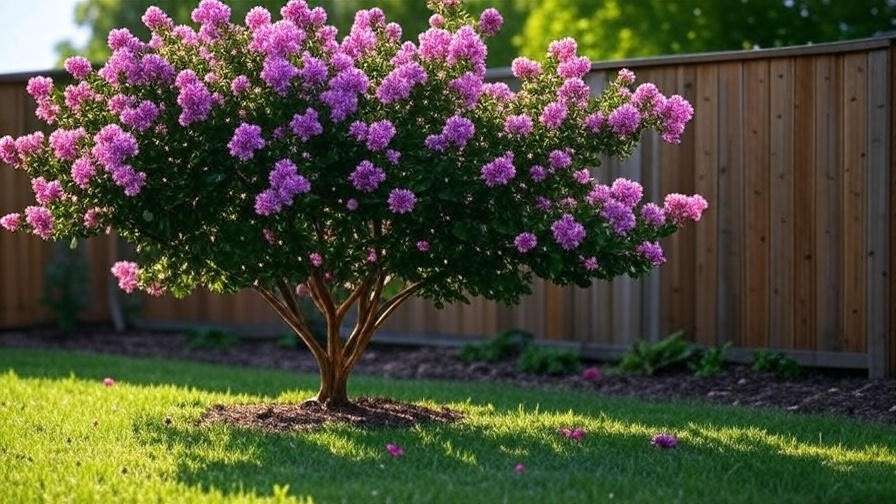
4. Dwarf Conifer (Pinus or Juniperus spp.) 🌲
Why It’s Great: Dwarf conifers, like ‘Mugo Pine’ or ‘Blue Star Juniper,’ offer evergreen structure and texture without overwhelming small spaces. Their slow growth ensures long-term manageability.
Best For: Year-round greenery or minimalist, modern garden designs.
Care Tips: Plant in well-drained soil with full sun to partial shade. Water sparingly once established, as conifers are drought-tolerant. Avoid over-pruning to maintain their natural shape.
Design Idea: Combine with decorative stones or gravel for a sleek, contemporary aesthetic that’s low-maintenance.
5. Flowering Dogwood (Cornus florida) 🌼
Why It’s Great: Flowering dogwoods dazzle with delicate spring flowers in white or pink, followed by vibrant red fall foliage and berries. Compact varieties like ‘Cherokee Princess’ are perfect for small spaces.
Best For: Shady corners or small woodland-style gardens.
Care Tips: Plant in acidic, well-drained soil with partial shade. Water regularly, especially during dry spells, and mulch to protect roots. Watch for powdery mildew and treat with organic fungicides if needed.
Design Idea: Underplant with shade-loving hostas or astilbes for a lush, layered effect.
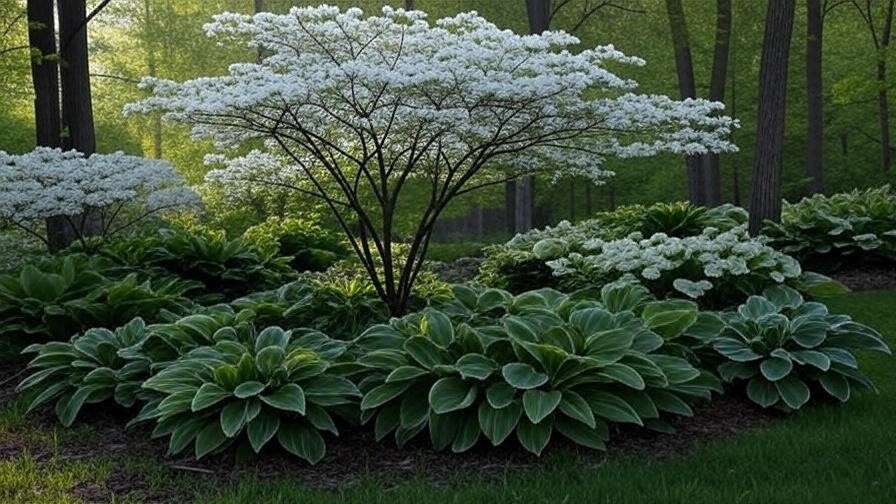
6. Weeping Cherry (Prunus pendula) 🌸
Why It’s Great: Weeping cherries are a romantic addition to any small garden, with their cascading branches adorned with delicate pink or white spring blooms. Varieties like ‘Pendula Rosea’ stay compact, making them ideal for limited spaces.
Best For: Cottage-style gardens or as a focal point near seating areas for a whimsical touch.
Care Tips: Plant in full sun with well-drained soil to encourage healthy blooms. Water regularly during the first two years to establish roots, and prune sparingly to maintain the weeping shape. Protect from strong winds to avoid branch damage.
Design Idea: Place near a garden bench or pathway to create a dreamy canopy effect, paired with soft perennials like lavender or catmint.
7. Redbud (Cercis canadensis) 💖
Why It’s Great: Redbuds are beloved for their heart-shaped leaves and vibrant pink or purple spring flowers that bloom directly on the branches. Compact varieties like ‘Ace of Hearts’ are perfect for small gardens.
Best For: Small yards or as an understory tree in partially shaded areas.
Care Tips: Plant in full sun to partial shade with well-drained soil. Water moderately, ensuring the soil doesn’t stay soggy. Prune after flowering to maintain shape and remove dead wood.
Design Idea: Plant near walkways or patios to showcase its early spring blooms and add seasonal drama to your garden.
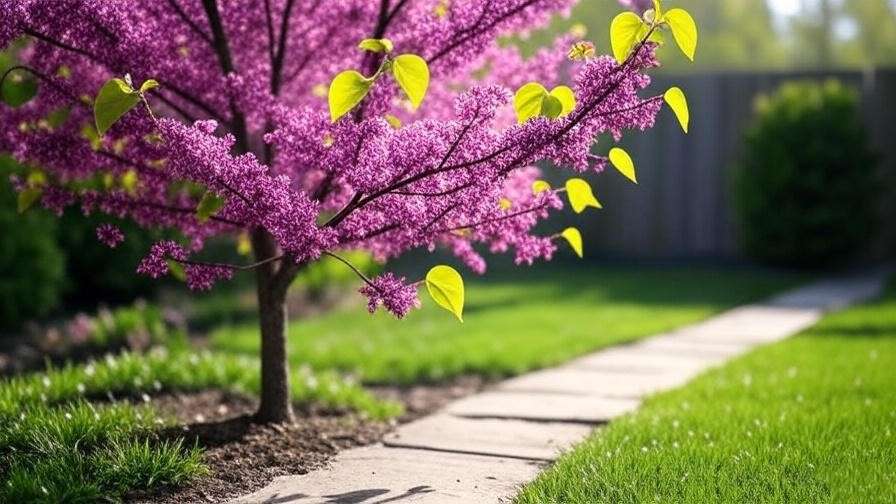
8. Dwarf Citrus (Citrus spp.) 🍋
Why It’s Great: Dwarf citrus trees, such as Meyer lemon or Calamondin orange, offer fragrant blooms, glossy evergreen foliage, and edible fruit. Their compact size makes them perfect for container gardening.
Best For: Patios, balconies, or warm-climate gardens where mobility is key.
Care Tips: Plant in full sun with well-drained, slightly acidic soil. Water consistently, allowing the top inch of soil to dry out between waterings. Protect from frost by moving potted trees indoors during winter in cooler climates.
Design Idea: Grow in decorative pots for flexibility, placing them near seating areas to enjoy their citrusy fragrance.

9. Hawthorn (Crataegus spp.) 🌹
Why It’s Great: Hawthorns offer spring flowers, fall berries, and attractive foliage, making them a multi-season standout. Compact varieties like ‘Crimson Cloud’ are ideal for small spaces and attract wildlife like birds.
Best For: Privacy hedges or bird-friendly gardens in small yards.
Care Tips: Plant in full sun with well-drained soil. Hawthorns are tolerant of poor soils and drought once established. Prune annually to maintain shape and remove suckers. Monitor for pests like aphids.
Design Idea: Use as a natural barrier along property lines, paired with native wildflowers to enhance biodiversity.
10. Amelanchier (Serviceberry) 🍇
Why It’s Great: Serviceberries, like ‘Autumn Brilliance,’ provide spring flowers, edible summer berries, and stunning fall foliage. Their compact size and multi-season appeal make them a small garden favorite.
Best For: Edible landscapes or urban gardens seeking year-round interest.
Care Tips: Plant in full sun to partial shade with well-drained soil. Water regularly during establishment, then reduce to moderate watering. Prune lightly to remove dead wood and encourage berry production.
Design Idea: Pair with ornamental grasses or low shrubs for a textured, natural look that highlights seasonal changes.
How to Choose the Right Decorative Tree for Your Garden 🌱
Assessing Your Space and Needs
Selecting the perfect decorative tree starts with understanding your garden’s unique conditions. Measure your available space, noting height and width restrictions to avoid overcrowding. Check your USDA hardiness zone to ensure the tree thrives in your climate. Consider sunlight exposure—some trees, like crape myrtles, need full sun, while others, like dogwoods, tolerate shade. Finally, define your goals: Are you seeking privacy, shade, aesthetic appeal, or wildlife support? For example, a hawthorn provides privacy and attracts birds, while a dwarf citrus offers edible fruit in a sunny patio. 🌞
Matching Trees to Your Garden Style
Your garden’s aesthetic influences tree selection. For modern designs, dwarf conifers or Japanese maples offer clean lines and bold textures. Cottage gardens shine with weeping cherries or crabapples, which add a soft, romantic vibe. Urban spaces benefit from versatile options like crape myrtles or dwarf citrus, which thrive in containers or tight plots. According to landscape designer Emily Carter, “Matching a tree’s form and foliage to your garden’s style creates a cohesive, inviting space that feels intentional.” 🌼
Expert Tips for Success
- Check Hardiness Zones: Use the USDA Plant Hardiness Zone Map to confirm your tree’s compatibility with your region.
- Consider Mature Size: Choose trees with compact growth habits to avoid outgrowing your space.
- Consult Local Nurseries: Experts can recommend region-specific varieties and provide planting advice tailored to your soil and climate.
- Plan for Maintenance: Opt for low-maintenance trees like dwarf conifers if time is limited, or embrace hands-on care with flowering dogwoods for rewarding results.
Planting and Caring for Decorative Trees 🌼
Planting Tips for Small Spaces
Timing and technique are critical for successful tree planting. Spring or fall are ideal seasons, as cooler temperatures promote root establishment. Dig a hole twice as wide as the root ball but no deeper, and amend the soil with compost for nutrient-rich growth. Space trees carefully to avoid overcrowding—check mature width to ensure proper placement. For container-grown trees like dwarf citrus, use high-quality potting mix and ensure pots have drainage holes. 🌱
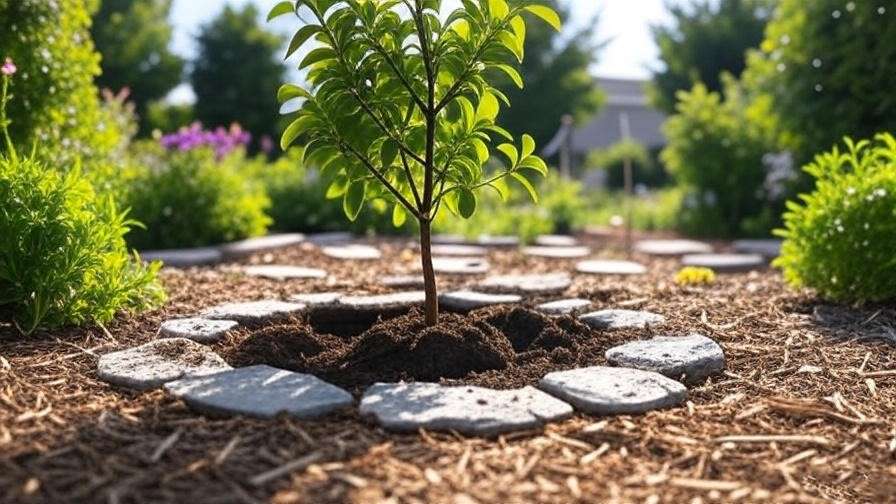
Ongoing Care and Maintenance
- Watering: Newly planted trees need consistent moisture—water deeply once or twice a week for the first year. Established trees require less frequent watering, depending on rainfall and soil type.
- Pruning: Prune in late winter or early spring to shape trees and remove dead or damaged branches. Avoid heavy pruning, which can stress compact varieties.
- Pest and Disease Prevention: Monitor for common issues like aphids (on hawthorns) or powdery mildew (on dogwoods). Use organic solutions like neem oil and ensure good air circulation around trees.
Common Mistakes to Avoid
- Overplanting: Planting too many trees in a small space creates a cluttered, unhealthy garden. Stick to one or two focal trees.
- Ignoring Soil and Sunlight Needs: Mismatched conditions lead to poor growth. Test soil pH and drainage before planting.
- Neglecting Seasonal Care: Mulch in winter to protect roots, and fertilize sparingly in spring to avoid overgrowth.
Design Inspiration: Incorporating Decorative Trees into Your Garden 🎨
Creating Focal Points
A single decorative tree can transform a small garden into a showstopper. A Japanese maple in a minimalist courtyard draws the eye with its vibrant foliage, while a weeping cherry near a patio creates a romantic focal point. Place trees strategically—near entrances, seating areas, or garden beds—to maximize impact. For example, a dwarf crabapple in a circular bed becomes a natural centerpiece, enhanced by low groundcovers like creeping thyme. 🌸

Combining Trees with Other Elements
Layering trees with complementary plants adds depth and texture. Pair dwarf conifers with lavender or ornamental grasses for a Mediterranean-inspired look. Underplant dogwoods with shade-tolerant hostas or ferns for a woodland effect. Use decorative mulch or stones to tie the design together, creating a polished, cohesive garden. Consider vertical elements like trellises or arbors to enhance small spaces without sacrificing room. 🌿
Seasonal Interest and Year-Round Appeal
Plan for multi-season beauty to keep your garden vibrant year-round. Redbuds offer spring flowers and fall color, while crape myrtles shine with summer blooms and winter bark. Combine trees with different peak seasons—like a spring-blooming weeping cherry and a fall-fruiting serviceberry—for continuous interest. This approach ensures your small garden remains dynamic and engaging throughout the year. 🍁
FAQs About Decorative Trees for Small Gardens ❓
- What are the best low-maintenance decorative trees?
Dwarf conifers and crape myrtles require minimal care, thriving with basic watering and occasional pruning. - Can decorative trees grow in containers?
Yes, dwarf citrus and Japanese maples adapt well to pots, offering flexibility for patios or balconies. - How do I prevent root damage in small spaces?
Choose trees with non-invasive roots, like crabapples or serviceberries, and use root barriers for added protection. - Which decorative trees attract pollinators?
Crabapples and hawthorns support bees and birds with their flowers and fruit, enhancing garden biodiversity. - How do I choose a tree for a shady small garden?
Opt for shade-tolerant trees like dogwoods or redbuds, which thrive in partial shade with proper care.
Conclusion: Transform Your Small Garden Today 🌟
Decorative trees are the ultimate solution for turning small gardens into stunning, functional oases. From the vibrant foliage of Japanese maples to the fragrant blooms of dwarf citrus, these top 10 trees offer beauty, versatility, and practicality for any compact space. By assessing your garden’s needs, choosing the right tree, and following expert planting and care tips, you can create a vibrant outdoor retreat that reflects your style. Start today by selecting one of these trees, consulting your local nursery, and planting the seeds for a breathtaking garden. For more inspiration, visit the Royal Horticultural Society or USDA Plant Database for trusted resources. 🌳

